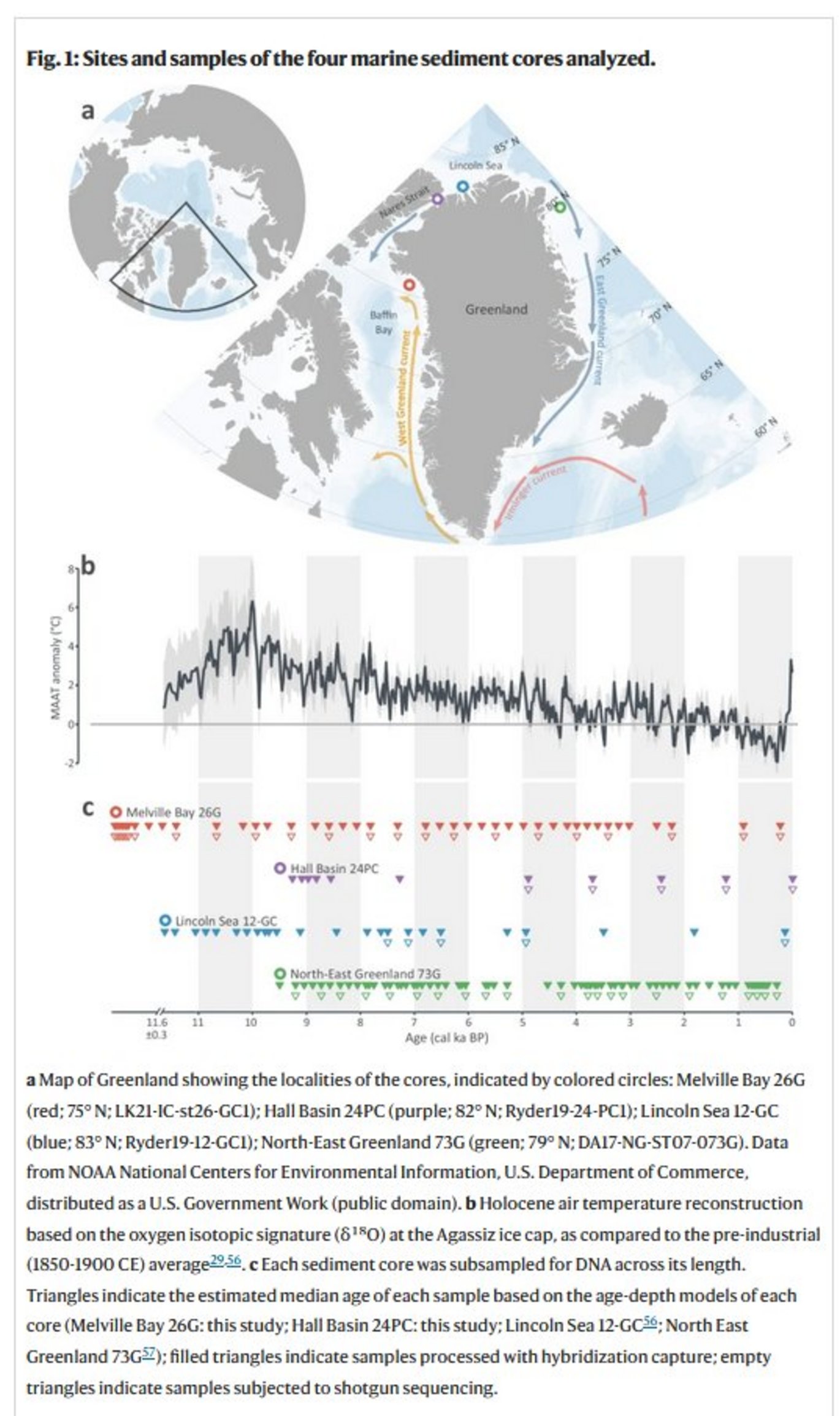Holocene shifts in marine mammal distributions around Northern Greenland revealed by sedimentary ancient DNA
New publication by Lennart Schreiber, Sofia Ribeiro, Rebecca Jackson, Anna Bang Kvorning, Kevin Nota, Matt O'Regan, Christof Pearce, Frederik Seersholm, Marit-Solveig Seidenkrantz, Heike H Zimmermann, Eline D Lorenzen

Abstract:
Arctic marine ecosystems have undergone notable reconfigurations in response to Holocene climate and environmental changes. Yet our understanding of how marine mammal occurrence was impacted remains limited, due to their relative scarcity in the fossil record. We reconstruct the occurrence of marine mammals across the past 12,000 years through detections based on sedimentary ancient DNA from four marine sediment cores collected around Northern Greenland, and integrate the findings with local and regional environmental proxy records. Our findings indicate a close association between marine mammals at densities detectable in marine sediments and the deglaciation of high Arctic marine environments at the onset of the Holocene. Further, we identify air temperature and changes in sea ice cover as significant drivers of community change across time. Several marine mammals are detected in the sediments earlier than in the fossil record, for some species by several thousand years. During the Early-to-Mid Holocene, a period of warmer climate, we record northward distribution shifts of temperate and low-arctic marine mammal species. Our findings provide unique, long-term baseline data on the occurrence of marine mammals around Northern Greenland, enabling insights into past community dynamics and the effects of Holocene climatic shifts on the region's marine ecosystems.
https://doi.org/10.1038/s41467-025-59731-0
